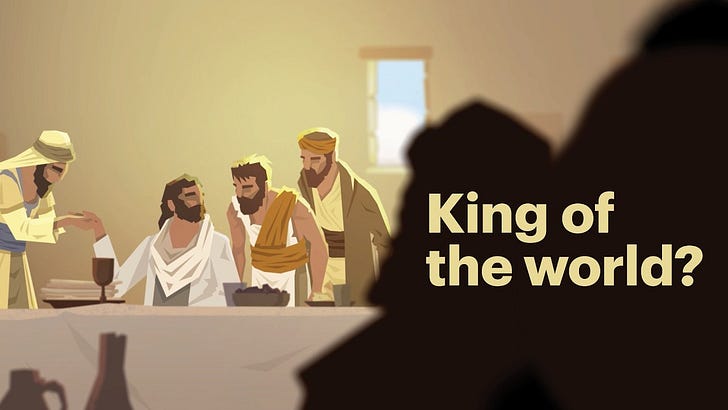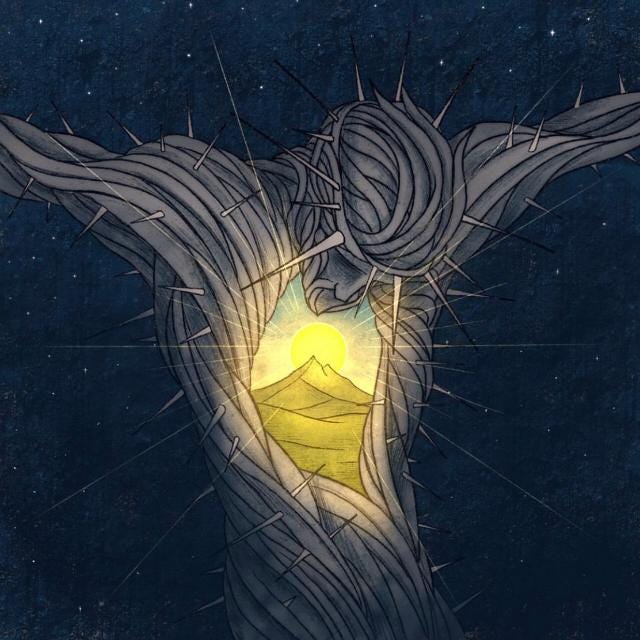He is Risen: Unveiling the Truth of the Resurrection
He is Risen: Unveiling the Truth of the Resurrection
The resurrection of Jesus Christ stands as the cornerstone of the Christian faith, a pivotal event that has shaped history and transformed countless lives. Yet, skeptics often question the authenticity of this miraculous occurrence, proposing that the early church fabricated the resurrection narrative. However, a closer examination reveals compelling reasons why the early church could not have concocted such a profound event.
1. Historical Context:
Matthew 27:26-31 (NIV)
²⁶Then he released Barabbas to them. But he had Jesus flogged, and handed him over to be crucified.
The Soldiers Mock Jesus
²⁷Then the governor’s soldiers took Jesus into the Praetorium and gathered the whole company of soldiers around him. ²⁸They stripped him and put a scarlet robe on him, ²⁹and then twisted together a crown of thorns and set it on his head. They put a staff in his right hand. Then they knelt in front of him and mocked him. “Hail, king of the Jews!” they said. ³⁰They spit on him, and took the staff and struck him on the head again and again. ³¹After they had mocked him, they took off the robe and put his own clothes on him. Then they led him away to crucify him.
Mark 15:15 (NIV)
¹⁵Wanting to satisfy the crowd, Pilate released Barabbas to them. He had Jesus flogged, and handed him over to be crucified.
The crucifixion of Jesus by the Romans around AD 30 is a well-established fact supported by both biblical and extra-biblical sources. The Roman practice of crucifixion and the historical figure of Pontius Pilate lend credibility to the narrative of Jesus' death on the cross.
2. Burial in Joseph of Arimathea's Tomb:
Matthew 27:57-60 (NIV)
The Burial of Jesus
⁵⁷As evening approached, there came a rich man from Arimathea, named Joseph, who had himself become a disciple of Jesus. ⁵⁸Going to Pilate, he asked for Jesus’ body, and Pilate ordered that it be given to him. ⁵⁹Joseph took the body, wrapped it in a clean linen cloth, ⁶⁰and placed it in his own new tomb that he had cut out of the rock. He rolled a big stone in front of the entrance to the tomb and went away.
The burial of Jesus in the tomb of Joseph of Arimathea is a significant detail recorded in the Gospels. Joseph, a member of the Sanhedrin who condemned Jesus, providing a noble burial for Jesus, defies the notion of early Christians inventing the story. The lack of symbolic significance in Arimathea's location strengthens the case for its historical authenticity.
3. Discovery of the Empty Tomb:
Matthew 28:5-6 (NIV)
⁵The angel said to the women, “Do not be afraid, for I know that you are looking for Jesus, who was crucified. ⁶He is not here; he has risen, just as he said. Come and see the place where he lay.
The discovery of the empty tomb on the third day following Jesus' burial is a cornerstone of the resurrection narrative. The Gospels recount the women finding the tomb empty, corroborating the historical fact that Jesus' tomb was indeed vacant. The early church would not have concocted a story that could easily be refuted if the tomb were not empty.
4. Testimony of Credible Witnesses:
1 Corinthians 15:3-8 (NIV)
³For what I received I passed on to you as of first importance: that Christ died for our sins according to the Scriptures, ⁴that he was buried, that he was raised on the third day according to the Scriptures, ⁵and that he appeared to Cephas, and then to the Twelve. ⁶After that, he appeared to more than five hundred of the brothers and sisters at the same time, most of whom are still living, though some have fallen asleep. ⁷Then he appeared to James, then to all the apostles, ⁸and last of all he appeared to me also, as to one abnormally born.
Numerous credible witnesses saw Jesus alive after his crucifixion, including his disciples, Mary Magdalene, and over five hundred individuals mentioned by the apostle Paul. These eyewitness testimonies, documented in the New Testament, provide compelling evidence for the reality of Jesus' resurrection.
5. Transformed Lives of the Disciples:
Acts 4:13 (NIV)
¹³When they saw the courage of Peter and John and realized that they were unschooled, ordinary men, they were astonished and they took note that these men had been with Jesus.
The transformation of Jesus' disciples from fearful and disillusioned followers to bold proclaimers of the gospel is a testament to the reality of the resurrection. Their willingness to endure persecution and martyrdom for their faith underscores the profound impact of encountering the risen Christ.
As we approach Easter, it is essential to delve deeper into the truth of the resurrection and its significance for our lives today. Bible Gateway Plus offers a wealth of resources, including 30 Study Bibles, commentaries, dictionaries, and more, to help you explore the meaning of Easter. With extra savings and a 14-day free trial, now is the perfect time to embark on a journey of discovery and deepen your understanding of the resurrection. Visit the link here to start your free trial today.
The resurrection of Jesus Christ stands as a beacon of hope and redemption, transcending time and space to offer salvation to all who believe. By examining the historical evidence and testimonies surrounding the resurrection, we can affirm with confidence that He is risen indeed, and His victory over death brings everlasting life to all who call upon His name.
If you find value in what I create here and on Instagram, you can support me financially through free-will contributions. You can become a paid subscriber here or PayPal me at https://www.paypal.me/rotvicjar.
I’ve made this post free for all. The biggest help you could give me is to share it widely (I mean, if you enjoyed it that is..)









